Yesterday at Flowcon, the conference on flow, I was able, with the help of Yannick, to present a session whose objective is to help understand contextual reading to adapt kanban systems to the culture in which they can evolve.
For people who were able to participate, here are the elements we covered. Naturally, be careful for those who would like to participate in the future—it’s better not to read the suggestions proposed at the end of the session.
This perspective on using kanban systems in the midst of their ecosystems is part of a book on Kanban initially written only by Laurent Morisseau and which I’m joining for this third edition planned to be released in spring 2019.
“Dynamic Kanban” session then
Surely not the best title, but the idea is to blend a reading framework like Spiral Dynamics applied to kanban systems. Blend? I’ve observed that often at the beginning of a coaching journey, we try to apply a method. The next step is that we become dangerous, because by mastering this method we apply it indiscriminately, as is. Then by evolving we understand that “things” cannot be limited to a method, but—and this is another danger—we try to accompany or “transform” others as we have transformed ourselves. Finally, we understand that accompanying organizations means “transforming” them as they should be transformed.
Let’s not change organizations as we lived our own journey. Let’s help organizations change as they need to.
In order to meet this need, to better understand and adapt our kanban systems, we propose to use a reading framework like Spiral Dynamics.
Presentation of the three contexts.
The session begins with the presentation of three contexts and three “kanban systems”. These are fictional contexts. But it’s interesting to question whether these contexts remind us of situations, ecosystems experienced by ourselves.
The very big company
Here, a department of the very big company. It’s an organization heavily based on processes. With clearly delineated roles for everyone where the “social castes” hardly evolve because that’s how things are and how things work. But faced with the upheavals of the world around them, and the increased rise of competition, a group of leaders in one of the big company’s departments is pushing to transform the work tool. Transform the work tool to regain markets, essential in their eyes lest they see this giant with feet of clay collapse.
They launch into using kanban systems. Why? To have levers that allow them to transform, improve, change their work tool eroded by bureaucracy and habits. It’s about making something dysfunctional functional. They want a stronger adherence to the market that is changing. We’re trying to make the production tool more efficient. Work on the fluidity of the work tool: end to end.
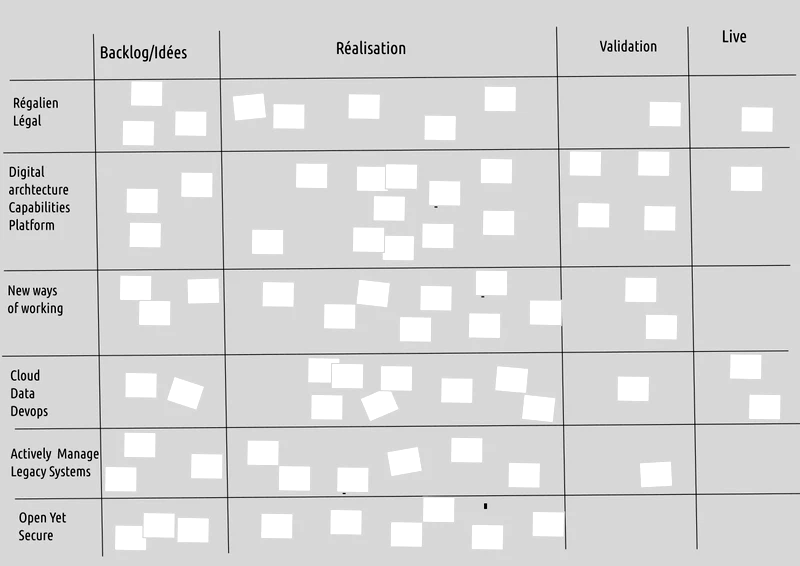
The young startup full of desire and ambition.
Here, a startup, full of desire and ambition. It’s a small group of ten people, sharp. Their product idea seems to interest many people. In any case, many people want to bet on them. The enemy is time. It’s pressing. Between the marks of interest and market validation, there’s an immense space that must be crossed.
The founding group is composed of entrepreneurs thirsting for success, but also people looking for meaning, with humanistic values. They want to create value. No matter the fluidity of their work tool, no process, nor real tool in the proper sense, but more like a commando unit that must validate its model, validate its hypotheses and constantly measure reception by the market. Impact mapping, A/B tests, etc. are the target practices. But this generates tensions. A startup that succeeds, yes, but not at any cost, not solely for financial success.
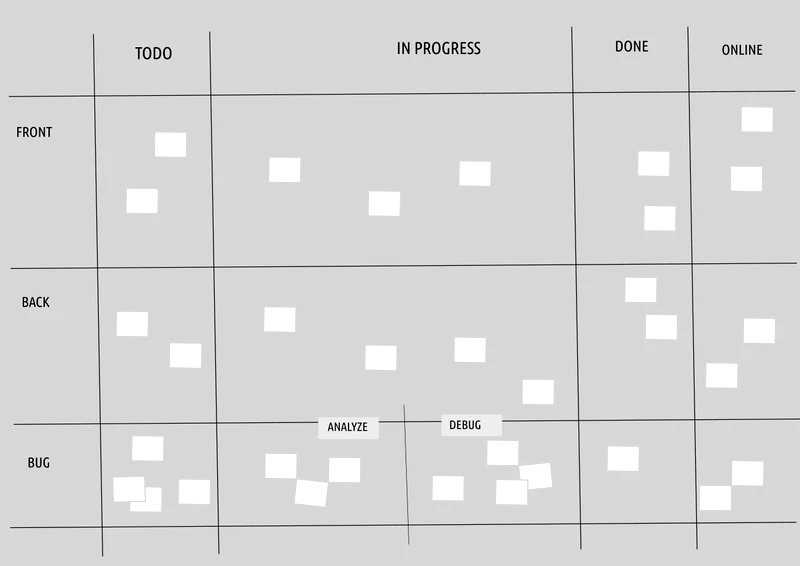
The family group with its secrets.
Here, an SME. Around the family, the company has evolved well. But it encounters what seems like a growth crisis. We no longer know if the organization is doing well or badly. We have a lot of work, but everything seems to be done in pain. But that’s how it is, and it always seems to have been that way. And the company has been doing well for a long time. Moreover, it’s an important moment it’s experiencing. The founder is finally retiring and one of his sons is taking over. For everyone, everything is going well or badly, but nothing is going to change.
The new CEO, the son, knows well the tradition around the family, which feeds on exploits and fits of rage. There are saviors who work themselves to death for the family, for the company. And a management team that knows each other by heart and dominates its troops. But the new CEO understands that these attitudes will wear down the company and that they will lead nowhere.
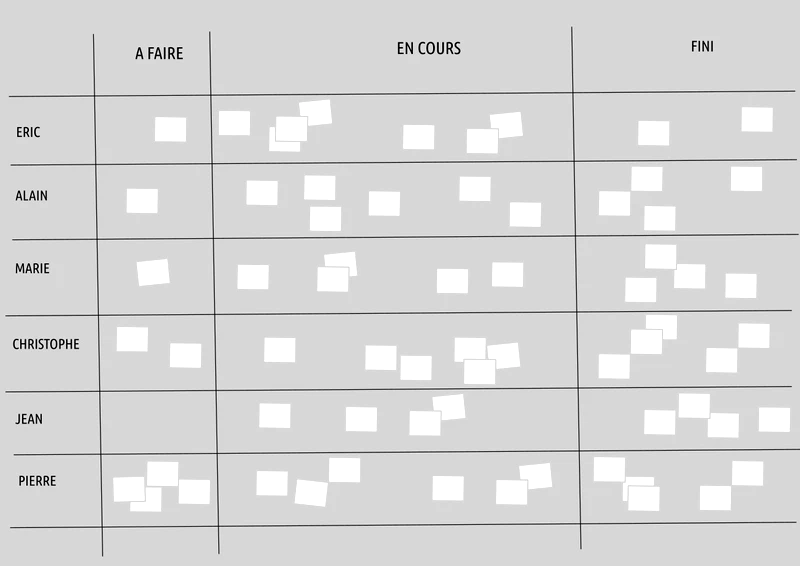
A series of sentences to immerse ourselves in different ways of thinking about the world around us.
We then distribute a series of sentences, and we ask each group to take hold of them and try to attribute them to these contexts—where would they be said? We warn that not all sentences are necessarily found in these three contexts. The idea is to really immerse ourselves in these contexts and begin to take hold of postures, a lexicon, a way of thinking about the world around us.
(The idea is to cut them out so that people—table of 8 max—can manipulate them easily).

Presentation of Spiral Dynamics
With this framework in place: 3 contexts, sentences to appropriate (we don’t yet give answers concerning the context/sentence connections), the next step is to take hold of a reading framework that both Yannick and I love very much, Spiral Dynamics.
Yannick’s presentation on slideshare
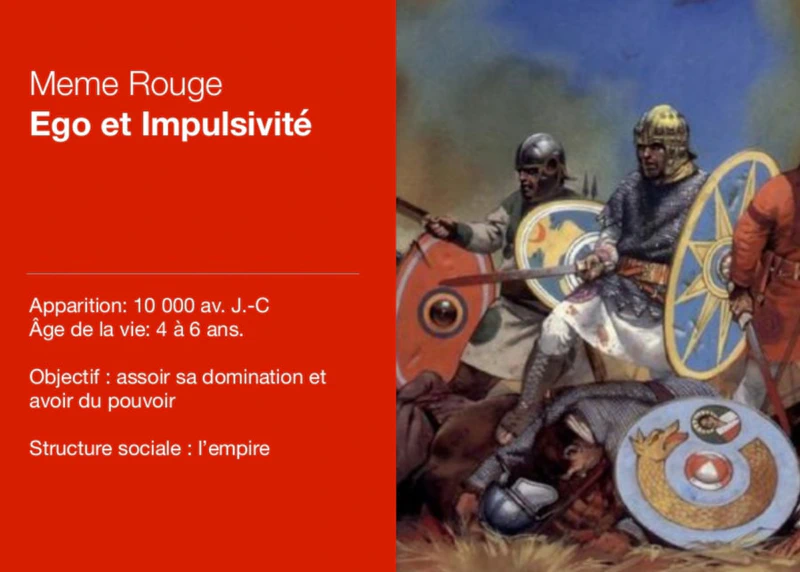
Following Yannick’s presentation, we distribute a small recap that will again enrich the understanding of this reading framework:
» Spiral Dynamics color sheets (pdf)
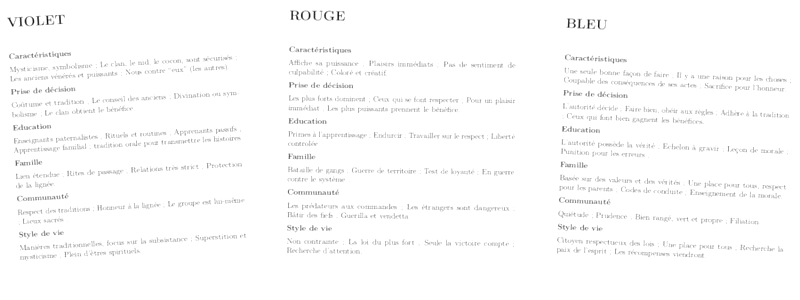
WARNING FROM NOW ON IF YOU READ THE REST THE WORKSHOP WILL LOSE FLAVOR FOR YOU IF YOU PLAN TO PARTICIPATE
(It’s in the moments that come next that the pieces assemble and a small epiphany can occur).
Understanding contexts and new questioning around sentences in light of Spiral Dynamics
The reading framework offered by Spiral Dynamics allows us to better understand the contexts and also to appropriate the sentences differently (apart from in our heads, the sentence/color concordance is not yet formalized, it will come if the mystical forces that surround us are willing).
We give participants time to appropriate the contexts and sentences again, the idea being to detect the colors of Spiral Dynamics that should be associated with them. Then we reveal our analysis.
In our reading, the very big company reveals itself to be a BLUE/orange context: that is to say a strong BLUE1 base within teams and pockets of ORANGE management here and there. The objective is to make a dysfunctional BLUE/orange organization functional.
In our reading, the young startup reveals itself to be a paradoxical context that combines GREEN and ORANGE. These two visions must be reconciled in this context.
In our reading, the family group reveals itself to be a predominantly RED context with a background of PURPLE, but its new leader wants to bring it toward BLUE to pacify it a bit.
At the end of this part, we clarify the contexts as mentioned above, and we associate the sentences with colors. Each group now has a context (life conditions to use a Spiral Dynamics expression), a kanban system, the description of an environment.
Proposal for improving kanban systems according to contexts and understanding of Spiral Dynamics
Finally, we give each group time to propose an advance, an adaptation, an improvement of each kanban system based on this reading. Then we propose our hypotheses:
Improvement proposal: The very big company.
On the Kanban system
- Accept inconsistencies between official processes and what appears (protection by managers, embodiment of effort by managers).
- Strengthen priorities beyond “broken or obsolete” processes: make priorities clearly visible (line “urgency”, “urgency badge”).
- Make these kanban systems very visible and accessible (avoid burying them in an electronic tool only).
- Try to reduce the size of elements to gain flexibility.
- Strive to pace deliveries by ritualizing them (indicate on the kanban system delivery every 3 months for example), or on kanban cards indicate the target delivery.
- Highlight (columns?) a desire to automate packaging and automated integration tests, or even before automating to have them.
- Make visible where processes bog down: highlight “buffers”.
Outside visual management
- Communicate in a traditional and “corporate” way about upcoming kanban systems.
- For example, distribute a guide, a reference framework, some feedback from other companies, training.
- For example, regular communication and during big meetings by managers.
- Support by managers of a possible J-Curve in strengthening cadence, CI/CD.
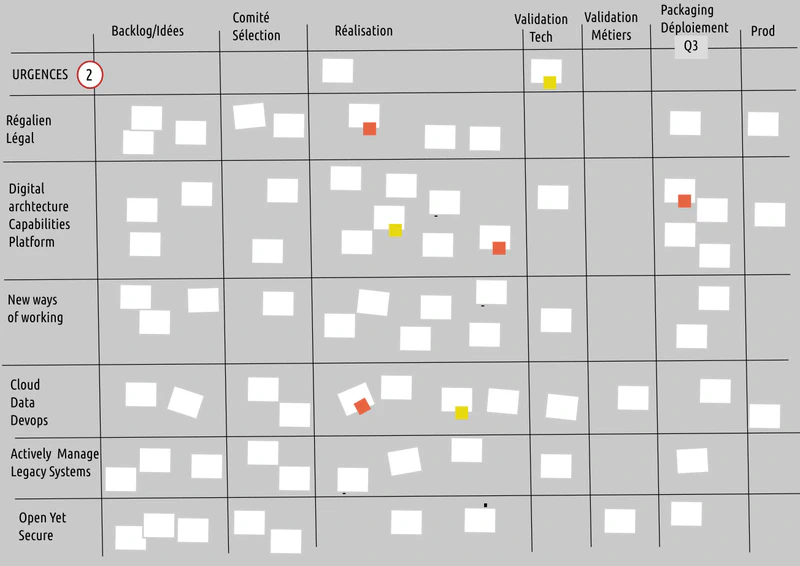
Improvement proposal: The young startup full of desire and ambition.
On the Kanban system
- Integrate end columns “impact / measure” to highlight true value (not “production”, or “delivered” or “finished”).
- Highlight meaning in “swim lanes” (horizontal lines, related to product features) to satisfy this quest among its people for purpose (or on kanban cards), or also a “meaning/value” measure in the title of the final column.
- Set up a pull flow (more respectful of people, of a group spirit, than top-down push flow).
- Introduce new elements in a dedicated column (which would come from creating a sociocracy-type operating mode)
Outside visual management
- Create operating instances like sociocracy/holacracy.
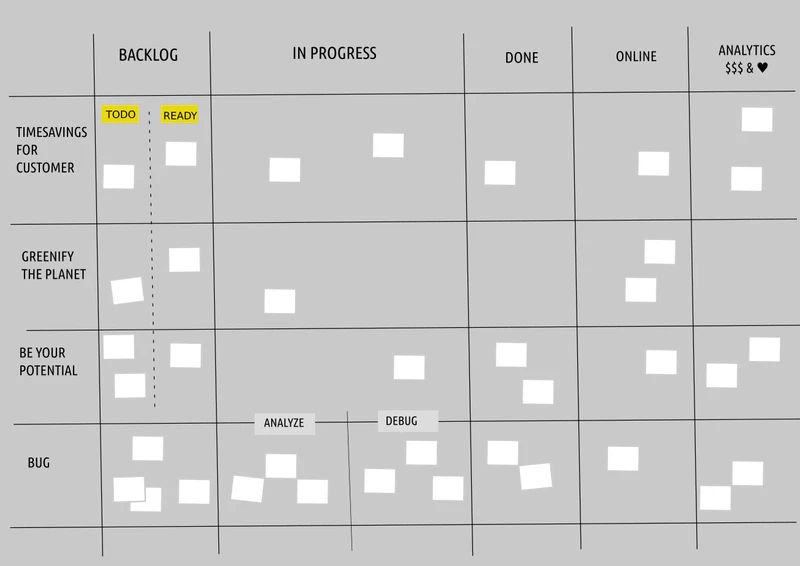
Improvement proposal: The family group with its secrets.
On the Kanban system
- Don’t hide the kanban systems.
- Don’t personalize “swim lanes” or cards, promote group work (putting names is a bad practice for “swim lanes”, we can put names on kanban cards instead).
- Clarify processes (column headers kanban systems), entry and exit rules.
- Strengthen processes (make “buffers” of validation stages clearly visible).
- Create an urgency line and limit it?
Outside visual management
- Introduce more serenity: processes, rules.
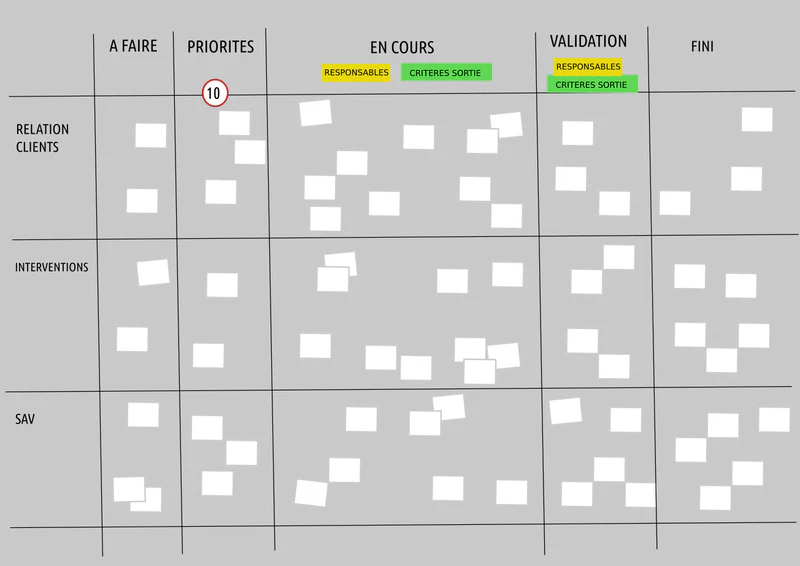
Conclusion
The idea is to show that kanban systems live in an ecosystem that we cannot ignore.
The idea is to clearly understand the organization’s request and its context. In Spiral Dynamics we talk about arrested, open or closed organizations. Open organizations are ready for improvement and change, arrested ones are ready to change or improve, but something stops them. Closed ones are not ready for change or improvement. There will be roughly two types of changes: one is disruptive, reform, revolution, the other is incremental, we improve. For closed organizations, neither is possible. For arrested organizations, we could improve, approach an incremental change (make something dysfunctional functional for example). For open organizations, all types of changes are possible.
Finally, having reading frameworks allows for constructive dialogue (Spiral Dynamics, Agile Fluency, etc.).
You’ll also find all this and more in the third edition of Kanban (at Dunod) in spring 2019 :)
-
not agreeing to respect Spiral Dynamics terminology. ↩︎